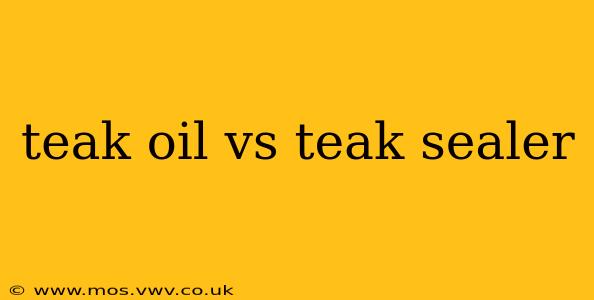Teak wood, renowned for its durability and rich golden hue, is a prized material for outdoor furniture, decking, and boatbuilding. However, even this robust wood requires protection from the elements to maintain its beauty and longevity. This often leads to the question: Teak oil vs. teak sealer – which is right for my project? The answer hinges on your priorities and the specific application. This detailed comparison will help you make an informed decision.
What is Teak Oil?
Teak oil, often a blend of linseed oil, tung oil, or other natural oils, is designed to penetrate deep into the wood's pores, nourishing and enriching it from within. It doesn't form a film on the surface like a sealer, but instead enhances the natural beauty of the teak by bringing out its color and grain. This deep penetration provides some protection against UV rays and moisture, but it's primarily focused on enhancing the wood's appearance and prolonging its life.
Pros of Using Teak Oil:
- Enhances natural beauty: Teak oil brings out the rich color and grain of the teak, making it appear more vibrant.
- Penetrates deeply: It nourishes the wood from within, improving its overall health and longevity.
- Relatively easy to apply: Application is generally straightforward, requiring less technical expertise than sealing.
Cons of Using Teak Oil:
- Limited protection: Offers less protection against UV rays, moisture, and weathering compared to sealers.
- Requires more frequent reapplication: Due to its absorptive nature, teak oil needs to be reapplied more often – typically every 3-6 months depending on the climate and exposure.
- Can become slippery when wet: Oiled teak can become slippery when wet, posing a safety risk in some applications.
What is Teak Sealer?
Teak sealer, on the other hand, forms a protective barrier on the surface of the wood. It acts as a shield against UV rays, moisture, mildew, and other environmental factors. Sealers are available in various finishes, from clear to semi-transparent to opaque, allowing you to customize the look of your teak.
Pros of Using Teak Sealer:
- Superior protection: Provides a significant barrier against the elements, extending the life of the teak.
- Longer lasting: Requires less frequent reapplication compared to teak oil, potentially lasting for a year or more depending on the product and conditions.
- More resistant to staining and discoloration: Better protects against staining from mildew, dirt, and other contaminants.
Cons of Using Teak Sealer:
- Can mask the natural beauty: Depending on the type of sealer used, it can alter the look of the teak, sometimes making it appear less natural.
- Can peel or crack: If not applied correctly or if the wood isn't properly prepared, the sealer can peel or crack over time.
- More complex application: Applying a sealer correctly often requires more preparation and skill than applying oil.
Teak Oil vs. Teak Sealer: Which Should You Choose?
The best choice depends on your priorities:
- Prioritize natural beauty and ease of application? Choose teak oil.
- Prioritize maximum protection and longer-lasting results? Choose teak sealer.
What is the best way to clean teak furniture before applying oil or sealer?
Cleaning your teak furniture thoroughly before applying either oil or sealer is crucial for optimal results. Use a mild detergent and a soft brush or sponge to remove dirt, grime, and mildew. Rinse thoroughly with clean water and allow the wood to dry completely before applying your chosen product.
How often should I apply teak oil or sealer?
The frequency of application depends on the product used, the climate, and the level of exposure to the elements. Teak oil typically requires reapplication every 3-6 months, while a high-quality sealer may last for a year or more. Always follow the manufacturer's instructions for specific reapplication recommendations.
Can I use teak oil and sealer together?
While you can technically use both teak oil and sealer, it's generally not recommended. The sealer will prevent the oil from penetrating the wood effectively, negating the benefits of using the oil. If you want both protection and the enhanced look of oiled teak, consider a sealer with a semi-transparent or natural finish that still allows some of the wood's grain to show through.
By understanding the key differences between teak oil and teak sealer, you can select the best option to protect and enhance your valuable teak wood investment. Remember to always follow the manufacturer's instructions for proper application and maintenance.
